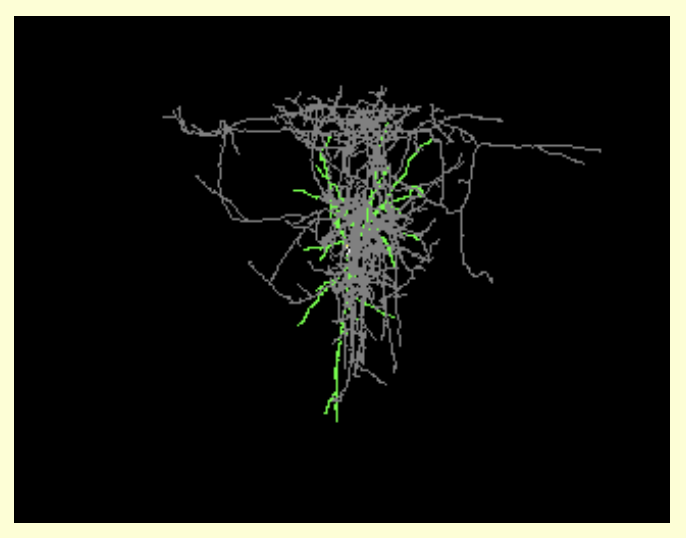URL: http://www.lifelines.net/
Proper Citation: Lifelines Biobank (RRID:SCR_010730)
Description: Overall aim of the LifeLines Study is to unravel the interaction between genetic and environmental factors in the development of multifactorial diseases, their concurrent development in individuals and their complications as a complex trait. The LifeLines database contains questionnaire data, physical measurements and biological samples from different health examinations. Collaboration is encouraged as it helps to maximize the scientific value of the wealth of epidemiologic data made possible by the participation of more than 165,000 individuals in the LifeLines Cohort Study. Primary objectives of the LifeLines Cohort Study are: a. Which are the disease overriding risk factors which predict the development of a multifactorial disease during lifetime? b. How are these universal risk factors modified, or what determines the effect of a universal risk factor in an individual? Specific research questions will focus on risk factors and modifiers (genetic, environmental and combined or complex factors) for single and multiple diseases. In addition to co-morbidity, LifeLines focuses on co-determinants. The primary endpoints include measures of aging, metabolic and endocrine diseases, cardiovascular and renal diseases, pulmonary and musculoskeletal diseases, and psychopathology. Secondary aims include the assessment of the prevalence and incidence of multifactorial diseases, their risk factors and their treatment in individuals as well as in families. The burden of disease for the society will be quantified in terms of care needed, and total costs of care. Until November 3, 2011, almost 68,000 subjects have been included in the study. The 60,000th participant was screened in the beginning of September 2011. Recruitment rate at present is between 700 and 800 subjects per week. The laboratory measurements which are performed has changed. As of October 2011, LifeLines will continue to measure: hematologic parameters, including hemoglobin, white blood cells, platelets, WBC differentiation, blood glucose, cholesterol, HDL-cholesterol, triglycerides, serum creatinin and sodium/potassium. Liver enzymes, thyroid hormones, calcium, phosphate, albumin, uric acid and microalbuminuria will not be measured routinely. The samples that are available for almost all participants, are: # serum (taken either with or without gel separator) # EDTA plasma # citrate plasma # DNA # early morning urine sample # urine samples of 24-hour urine collection Any researcher who is member of an internationally recognized academic institution and who is interested in utilizing the research possibilities, data and materials of LifeLines may apply for access. The applicant who is acting as Principal Investigator must be connected to a department or institution with the competence to carry out the research project to term. A contract will give the right to use the data for a pre-determined period of time. This contract also comprises the costs for the LifeLines Biobank which the investigator needs to reimburse. To apply for access, refer to the electronic application process.
Abbreviations: Lifelines Biobank
Synonyms: LifeLines Cohort and Biobank, LifeLines Cohort Biobank, LifeLines Cohort & Biobank
Resource Type: biomaterial supply resource, material resource
Keywords: blood, urine, plasma, serum, dna, edta plasma, citrate plasma, general population, clinical data, epidemiologic data, genetic factor, environmental factor, complex factor, multifactorial disease, risk factor, metabolic disease, endocrine disease, cardiovascular disease, renal disease, pulmonary disease, musculoskeletal disease, psychopathology, disease, nutrition, lifestyle, genetic epidemiology
Expand Allis listed by |
We found {{ ctrl2.mentions.total_count }} mentions in open access literature.
We have not found any literature mentions for this resource.
We are searching literature mentions for this resource.
Most recent articles:
{{ mention._source.dc.creators[0].familyName }} {{ mention._source.dc.creators[0].initials }}, et al. ({{ mention._source.dc.publicationYear }}) {{ mention._source.dc.title }} {{ mention._source.dc.publishers[0].name }}, {{ mention._source.dc.publishers[0].volume }}({{ mention._source.dc.publishers[0].issue }}), {{ mention._source.dc.publishers[0].pagination }}. (PMID:{{ mention._id.replace('PMID:', '') }})
A list of researchers who have used the resource and an author search tool
Find mentions based on location

{{ ctrl2.mentions.errors.location }}
A list of researchers who have used the resource and an author search tool. This is available for resources that have literature mentions.
No rating or validation information has been found for Lifelines Biobank.
No alerts have been found for Lifelines Biobank.
Source: SciCrunch Registry





